Best 12 Online Selling Platforms for E-commerce Brands and Sellers
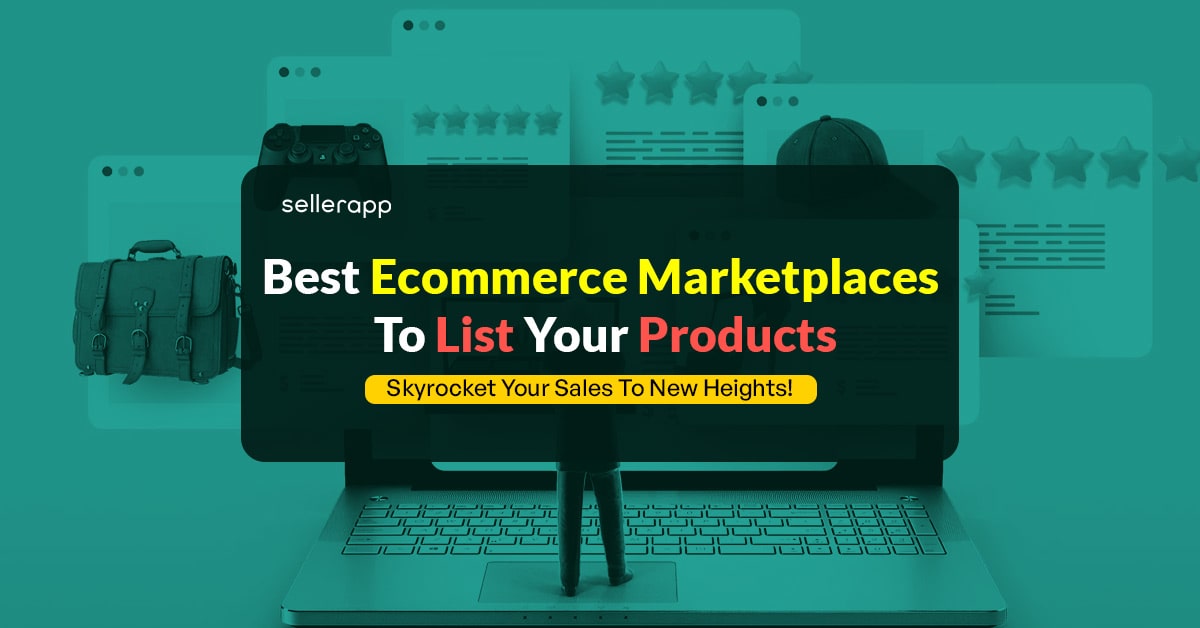
If you’re planning on selling on e-commerce or online marketplaces, then you’re in the right place at the right time!
With projections indicating that e-commerce sales are poised to exceed $4,117 billion in 2024, it’s clear that the digital marketplace is where the action is at.
But there is a catch (there always is): succeeding in the fiercely competitive online marketplace requires more than just listing products and hoping for the best—it demands a premium structured strategy.
By the way setting up an ecommerce business itself isn’t too hard, so if you are an aspiring ecommerce seller, you should definitely read the article Everything You Need to Know About Amazon For Business.
Before diving in, it’s essential to identify the ideal online marketplaces customized to your brand’s needs. Each online sales platform has its own set of criteria, product categories, enrollment fees, and target audiences. Thus, conducting thorough research is important to making informed decisions.
Let’s embark on this journey together and unlock the potential of the top 12 online marketplaces to sell online effortlessly.
Quick Guide
- What is an online marketplace?
- Top 12 e-commerce marketplaces to sell your products effortlessly
- How do you choose where to sell
- What are the benefits of selling on online marketplaces?
- Important factors to keep in mind before selling online
- 5 best strategies to sell on online marketplaces
- Final Thoughts
What is an Online Marketplace?
An online marketplace is a digital platform where multiple independent vendors or sellers offer consumers a wide variety of products or services. Unlike traditional e-commerce stores run by a single entity, these marketplaces facilitate transactions between buyers and sellers without owning the inventory themselves. They provide a centralized space that includes tools for listing products, processing payments, and often handling shipping and customer service.
Examples of prominent online marketplaces include:
- Amazon
- eBay
- Alibaba
- Walmart
These online platforms typically earn revenue through fees and commissions charged to sellers for using the platform.
Also, sellers have limited control over the branding and customer experience, as the marketplace dictates many of the platform’s policies and guidelines. Despite all these, online marketplaces have become a cornerstone of the digital economy, driving innovation and expanding market access for both consumers and businesses.
Top 12 E-commerce Marketplaces to Sell Your Products Effortlessly
Here are the top 12 e-commerce marketplaces where you can sell your products effortlessly. Let’s dive in.
1.Amazon
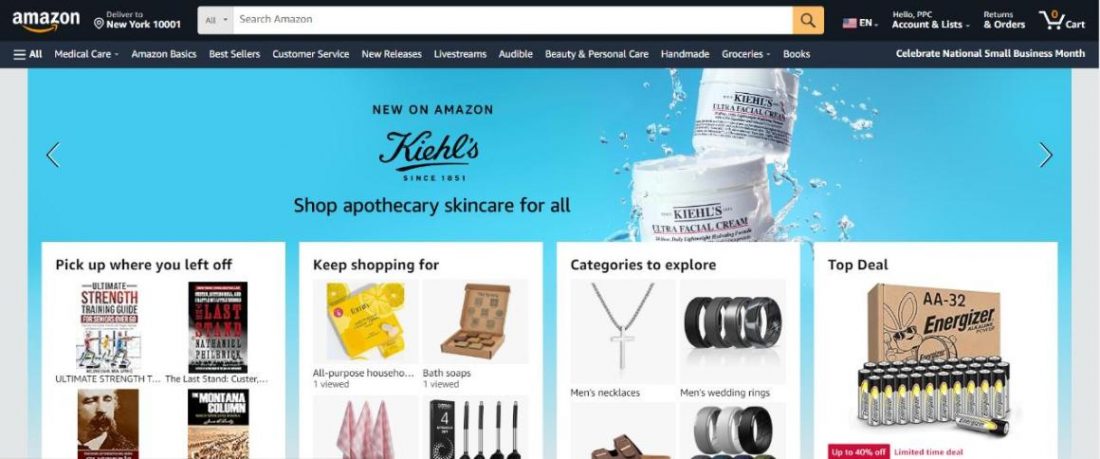
Amazon is the largest e-commerce marketplace globally, offering vast reach and a trusted platform for sellers. To succeed on Amazon, optimize your product listings with high-quality images, detailed descriptions, and strategic keywords. Use Amazon’s advertising options, such as Sponsored Products and Sponsored Brands, to increase visibility.
The marketplace also allows integration with various service providers to ensure complete automation of the selling process. For example, you can integrate with SellerApp to enable high-performing Sponsored ads with low ACoS.
Additional Read: Amazon Advertising Grading Checklist for 2023.
Amazon Marketplace Fees
Amazon charges a referral fee (typically 8-15% of the sale price) and a variable closing fee. There are also FBA fees for storage and shipping if you use their logistics service.
To know more about Amazon fees, you can check out this article.
How to Setup an Amazon Account
To start selling on Amazon,
- Create an Amazon Seller Central account.
- Choose between an individual or professional selling plan.
- List your products
- Verify your identity and provide the necessary tax and bank details.
If you want a detailed guide on how to set up your Amazon account, check out this article.
2.Walmart

Walmart’s marketplace offers access to millions of loyal customers, particularly in the U.S. You have to optimize listings with detailed product information and competitive pricing. Utilize Walmart’s Sponsored Products program to enhance product visibility.
Walmart Marketplace Fees
Walmart charges a referral fee ranging from 6% to 20%, depending on the product category. There are no monthly subscription fees.
How to Setup a Walmart Account
- Apply to become a Walmart Marketplace seller.
- Complete the registration process.
- Integrate your product catalog.
- Provide your business information.
- Agree to Walmart’s Retailer Agreement.
3.eBay

eBay is a versatile platform catering to a wide range of products, from collectibles to electronics. Use high-quality images and detailed descriptions, and consider auction-style listings to attract bids and drive up prices.
eBay Marketplace Fees
eBay charges an insertion fee per listing and a final value fee, typically 10% of the sale price. Additional fees apply for listing upgrades.
How to Setup an eBay Account
- Create an eBay seller account.
- Set up your payment method through PayPal or eBay Managed Payments.
- List your products.
- You can choose auction or fixed-price formats.
4.Etsy
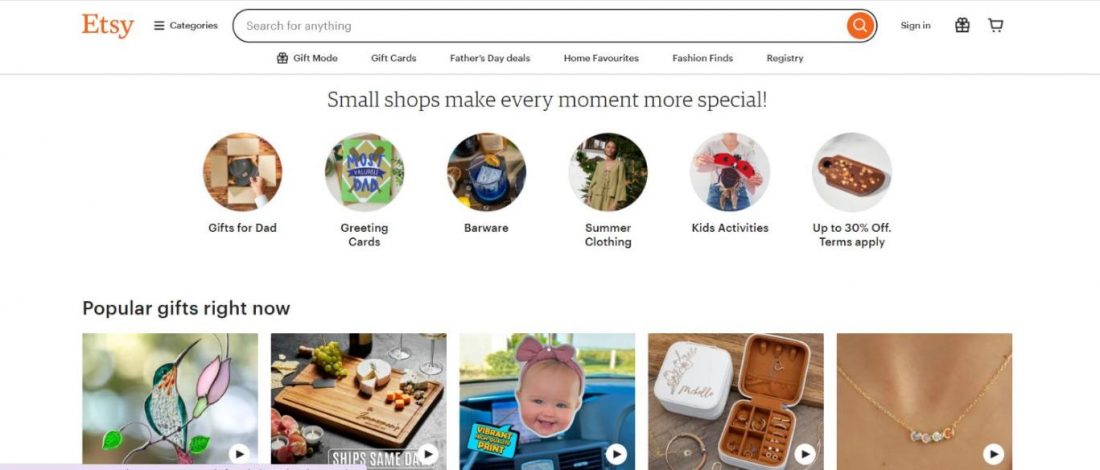
Etsy is ideal for handmade, vintage, and craft supplies. Optimize listings with clear images, detailed descriptions, and tags. Engage with the community through Etsy Teams and forums.
Etsy Marketplace Fees
Etsy charges a listing fee of $0.20 per item, a 5% transaction fee, and a 3% + $0.25 payment processing fee.
How to Setup an Etsy Account
- Create an Etsy seller account.
- Set up your shop preferences.
- List your products.
- Customize your shop with a banner, policies, and the About section.
Recommended read:
13 Best SEO Tips for Etsy Sellers
Amazon vs. Etsy: What’s the best option for you?
5.Shopify

Shopify is a comprehensive e-commerce platform for building your online store. Optimize your site with professional themes, SEO tools, and integrated apps. Use Shopify’s marketing tools like email campaigns and social media integration.
Shopify Marketplace Fees
Shopify charges a monthly subscription fee ($29-$299/month) and transaction fees if not using Shopify Payments (2% + additional fees).
How to Setup a Shopify Account
- Sign up for a Shopify account.
- Choose a pricing plan.
- Customize your store.
- Add products, and configure payment and shipping settings.
- Launch your store.
Recommended guide: How do Sellers Benefit from Amazon Shopify Integration?
6.Target
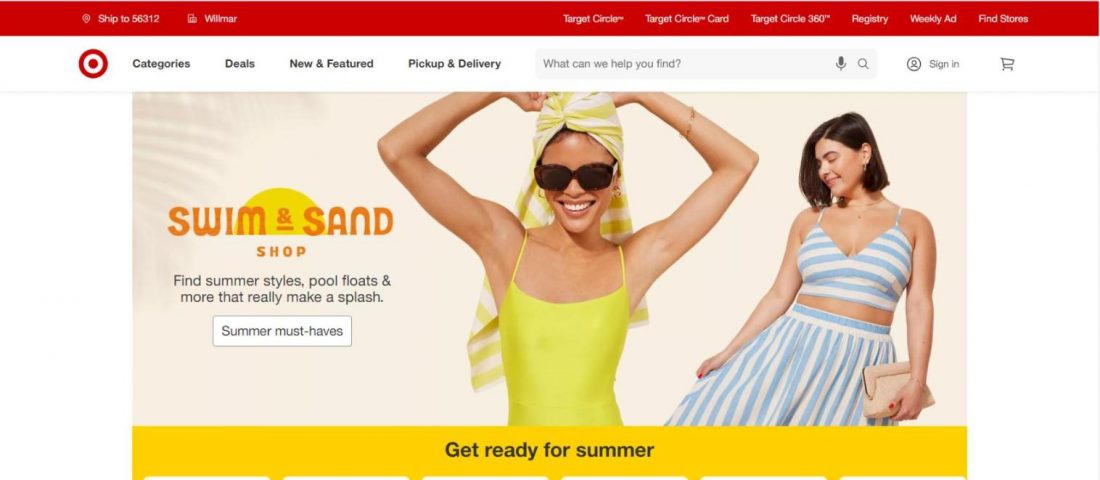
Target’s marketplace, Target Plus, is invite-only and focuses on high-quality, reputable brands. Optimize listings with detailed product information and competitive pricing. Leverage Target’s marketing and promotional tools.
Target Marketplace Fees
Target Plus charges a commission fee that varies by category but typically ranges between 5% and 15%.
How to Setup Target Account
- Receive an invitation to join Target Plus.
- Complete the registration process.
- Integrate your product catalog.
- Provide your business information and agree to Target’s terms.
7.Shopee
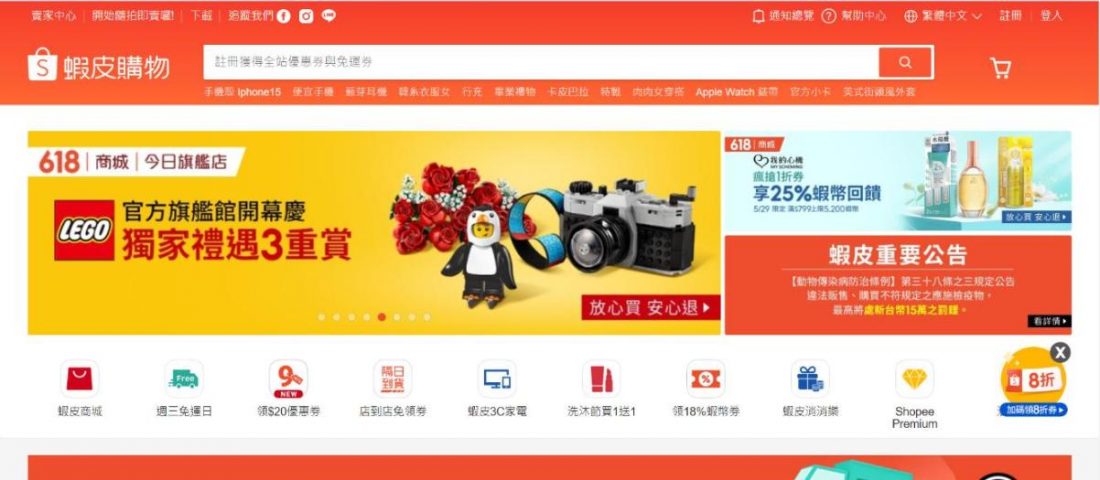
Shopee is a leading e-commerce platform in Southeast Asia and Taiwan. Optimize your store with attractive visuals, and clear product descriptions, and participate in Shopee’s promotions and flash sales.
Shopee Marketplace Fees
Shopee charges a commission fee that varies by region and product category, typically between 1% and 2%.
How to Setup Shopee Account
- Sign up for a Shopee seller account.
- Complete the registration.
- List your products.
- Customize your shop profile and participate in platform-specific promotional activities.
Shopee has proven to be extremely profitable for sellers. However, this also makes it competitive. We recommend sellers take advantage of a Shopee Product API to gather the necessary intelligence to stand out.
8.Alibaba
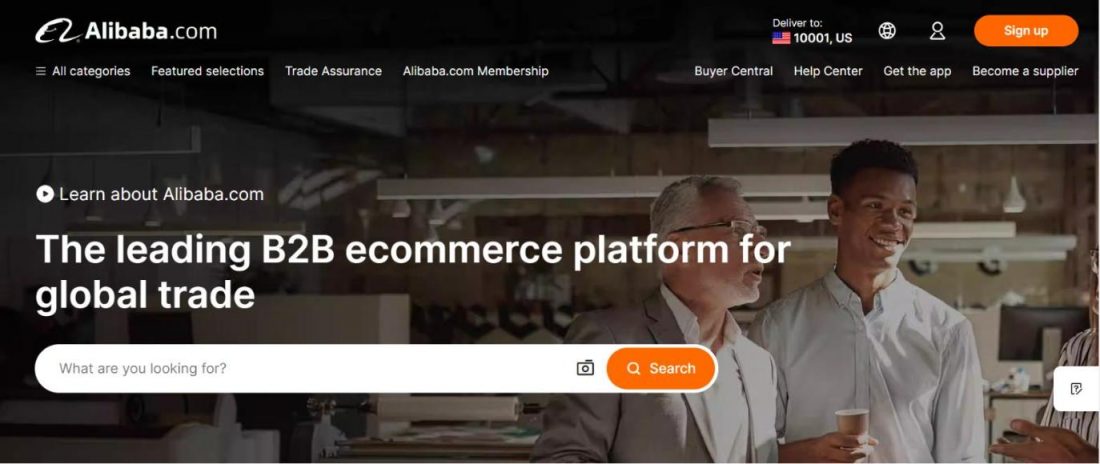
Alibaba is the world’s largest B2B marketplace, connecting manufacturers with global buyers. Optimize listings with detailed product specifications, quality images, and comprehensive descriptions.
Alibaba Marketplace Fees
Alibaba charges a membership fee for Gold Suppliers and a transaction fee based on the value of the order.
How to Setup an Alibaba Account
- Register as a seller.
- Choose a membership plan.
- Create your company profile.
- List your products with detailed descriptions and images to attract buyers.
9.Wish
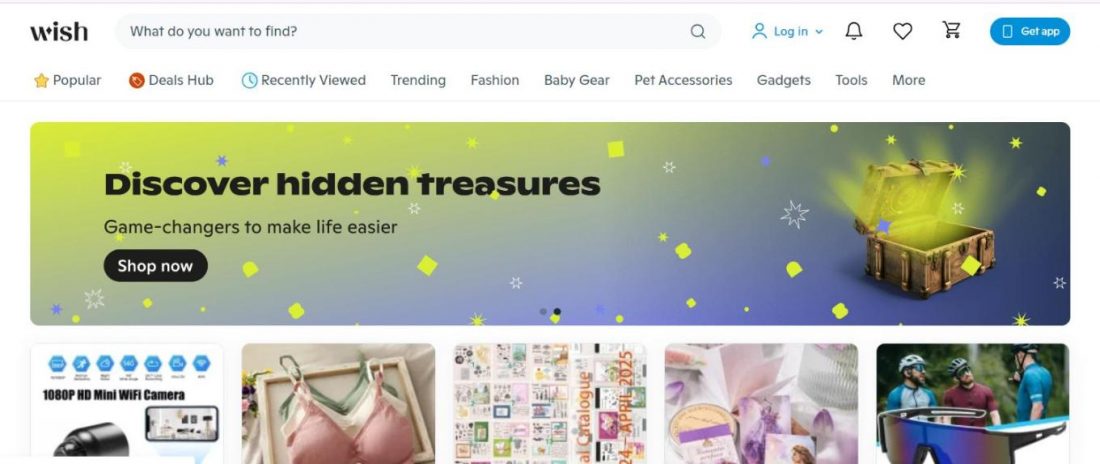
Although Wish has a bad rep for its poor quality of products, it still is one of the most popular marketplaces in the world. You can find low-cost, high-demand items, particularly in categories like electronics and fashion. Optimize your listings with attractive images and concise descriptions. Utilize Wish’s Boost feature to promote products.
Wish Marketplace Fees
Wish charges a commission fee of 15% per transaction.
How to Setup a Wish Account
- Create a Wish merchant account.
- List your products.
- Set up your store profile.
- Use Wish’s Merchant Dashboard to manage inventory and orders.
10.Allegro
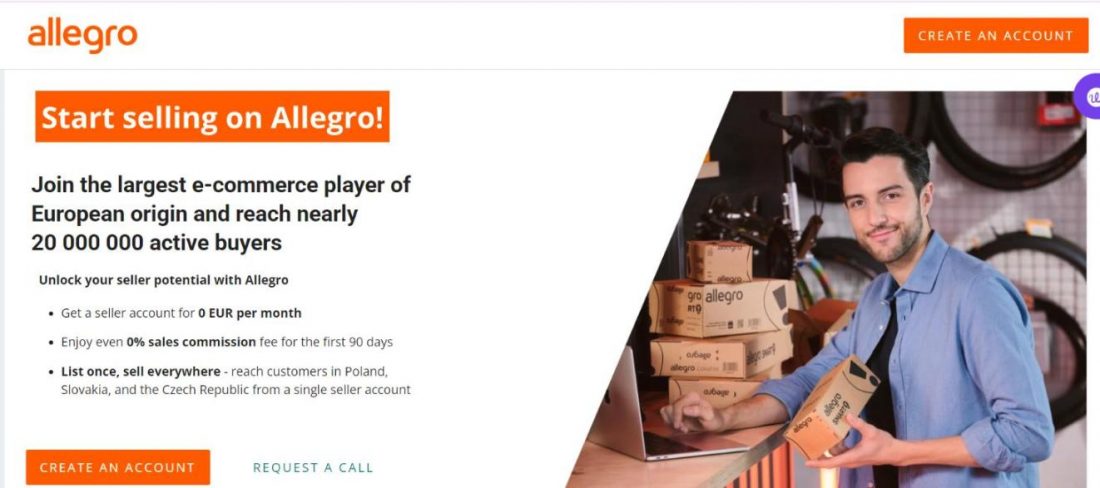
Allegro is the largest e-commerce marketplace in Poland. Optimize listings with clear images, detailed descriptions, and competitive pricing. Participate in Allegro’s promotional campaigns to increase visibility.
Allegro Marketplace Fees
Allegro charges listing fees and commission fees that vary by product category.
How to Setup an Allegro Account
- Register as a seller on Allegro.
- Complete the verification process.
- List your products.
- Customize your store profile and participate in Allegro’s marketing programs.
11.Facebook Marketplace
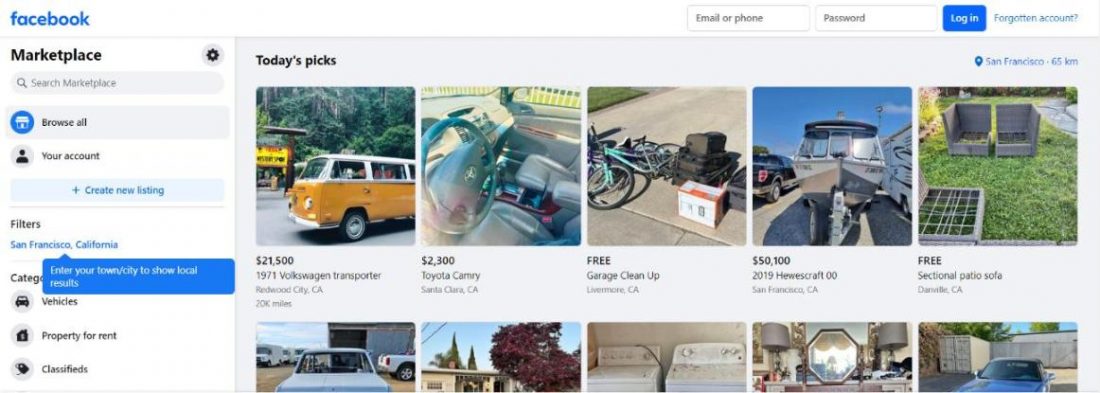
Facebook Marketplace allows you to sell directly to local buyers through the Facebook platform. Optimize listings with clear images, detailed descriptions, and prompt responses to inquiries.
Facebook Marketplace Fees
There are no listing fees for Facebook Marketplace, but for transactions completed through Facebook’s checkout system, a selling fee of 5% per shipment or a flat fee of $0.40 for shipments of $8.00 or less applies.
How to Setup Facebook Marketplace Account
- Access Facebook Marketplace through your Facebook account.
- Create a listing.
- Provide product details and images.
- Communicate with buyers through Facebook Messenger.
12.Wayfair
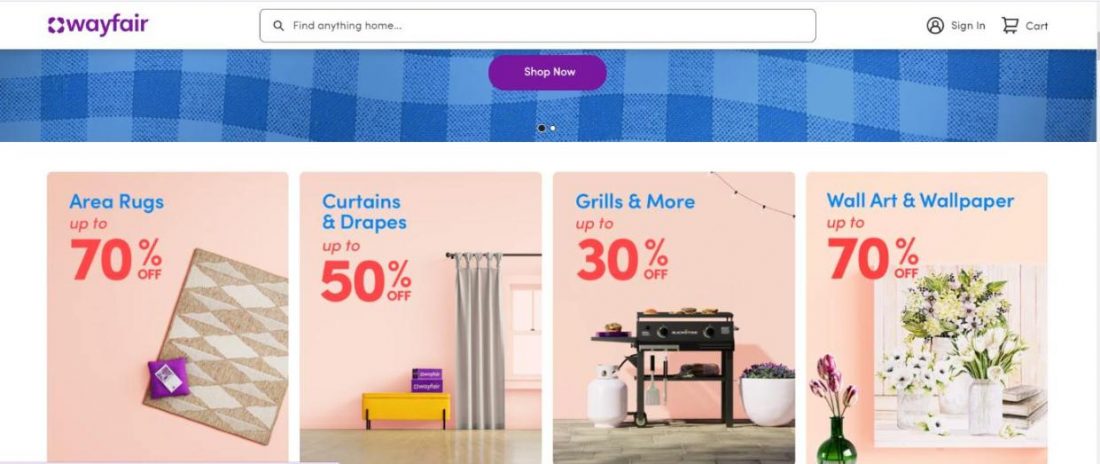
Wayfair is a leading marketplace for home goods. Optimize listings with high-quality images and detailed product information. Utilize Wayfair’s marketing tools to enhance visibility.
Wayfair Marketplace Fees
Wayfair charges a commission fee that varies by product category and includes the cost of shipping.
How to Setup Wayfair Account
- Apply to become a Wayfair supplier.
- Complete the registration process.
- Integrate your product catalog.
- Provide detailed product information and collaborate with Wayfair’s merchandising team to optimize listings.
How Do You Choose Where to Sell
Choosing where to sell your products or services involves understanding the different types of marketplaces available and evaluating which aligns best with your business goals, target audience, and operational capabilities.
Here’s a breakdown of open marketplaces and private marketplaces:
1.Open Marketplaces
These marketplaces are platforms that allow any seller to join and list their products or services, often with minimal barriers to entry. With open marketplaces, you can reach a large audience quickly. Also, they will have potentially significant fees which can impact your profit margins.
For example, Amazon is known for its vast customer base and extensive product categories. Amazon allows anyone to become a seller. This can be beneficial for gaining exposure to a large audience but the competition can be tough and sellers must follow the strict guidelines and fees.
2.Private Marketplaces
These marketplaces are more exclusive. They may need an application process or invitation to join. These platforms can be more niche and controlled. In addition, these marketplaces allow you to better brand presentation and control over the customer experience. If you sell niche or high-end products, then these marketplaces can provide you with access to a more targeted, higher-value customer base.
For example, Wayfair specializes in home goods and furniture. This shows that they are selective about their vendors, ensuring a consistent quality of products.
What are the Benefits of Selling on Online Marketplaces?
Let’s look at the most attractive advantages of selling online:
1.Fast Launch Times
If you’re new to selling online, eCommerce marketplaces can be the most sought-after way to generate revenue and build your brand as you work to drive traffic to your products. Once approved as a third-party seller on marketplaces, you simply list your products and start selling.
Not only that, these eCommerce marketplaces make sure that shoppers have the best experience on their websites, therefore, they optimize their sites from time to time, improve their algorithms, and add new features to their platforms. This is why, as a seller, you never have to focus on anything else except making your business stand out from the crowd.
Additional Read: How Fashion eCommerce Retailers Can Reduce Online Returns
2.Established Programs
The biggest and most established online marketplaces have programs in place to help you tap the strategies of marketing, selling, and fulfillment, without any hassle.
For example, sellers on Amazon can access Amazon advertising, opt for FBA to let Amazon fulfill their orders and so much more. Each of these programs is packed with tools to help you get products in front of all the right audiences, at just the right times. But sometimes, that’s not enough.
These marketplaces are highly competitive and therefore, you need to know the best industry practices to sell online. Now, this isn’t possible without leveraging your data. That’s why you need the most powerful solution in the market to power your Amazon sales and maximize ad ROI, optimize product sourcing and listing, and everything else.
3.Large Customer Bases
The biggest marketplaces are not just famous for their excellent UX, they also have enormous built-in audiences of consumers who regularly shop at these sites. So, if you are selling on Amazon, you can reach out to 200 million Amazon shoppers.
Did you know that 56% of all product searches now begin (and often end) on Amazon? This means that these customers don’t even look at other retail sites. Hence, being a third-party seller will bring you enormous profits. However, just like billions of potential revenue ready to be tapped, Amazon has a huge competition that’s very difficult to seep through.
It may happen that your products won’t show up in the search results, instead, your competitor products will rank high on the search results. This happens because they have very strong selling strategies in their buckets and they are already using their data and third-party ML-powered solutions to power their brand.
Hence, to beat your competitors, you need the help of industry experts to assist you with the best listing practices, advertising strategies, and premium product niche identification that are bound to boost your sales to the optimum level.
By using these benefits, sellers can effectively expand their business, improve operational efficiency, and maximize their revenue potential through online marketplaces.
Important Factors to Research Before You Sell Online
Whether you’re a small start-up looking to build your business, or you’re an established seller looking to expand, online marketplaces are great platforms to sell on.
However, you must consider a few things before you jump right into the online retail business.
Here are five important factors you should research before you start to sell online
1.Marketplace Traffic
As one of the greatest benefits of selling on a marketplace is the in-built customer base, before anything else we would recommend that you analyze the site’s traffic.
While the quality of visitors is inherently more important, understanding the quantity of website traffic is still worthwhile, particularly if you’re looking at the less-established, niche marketplaces.
For example, if you wish to sell home décor items, it’s best to suggest choosing Amazon or Etsy as your marketplace rather than eBay as Amazon witnesses 30% more sales on home and outdoor products, as compared to eBay.
2.Fee Structure
When selling on a marketplace, there are fees and other marketing costs that you need to consider. Start by researching the site’s fee structure and figure out whether they only charge selling commission, or they also charge listing fees, as well.
You will also need to consider any potential additional fees including inventory costs, shipping fees, marketing fees, and any other costs that could be incurred through the use of complementary support. For example, Etsy charges several fees that can add up quickly, especially for new sellers who need to create more listings to attract buyers.
3.Support From The Marketplace
It’s important to know that the majority of marketplaces offer support to help sellers get the most from their site, whether through delivery scheduling software, or other tools for marketing and sales, or having access to a dedicated advertising console.
Marketplaces tend to provide sellers with APIs to help them succeed and scale faster. These marketplace APIs allow sellers to bulk upload products, collect product data to forecast sales, and establish predictive models.
However, these marketplace APIs often do not offer clean data, and it can take time to gather visible insights. Instead, you can depend on third-party APIs like SellerApp’s e-commerce data APIs to fill in any missing gaps. These third-party APIs can provide more refined data and analytics, helping you make better-informed decisions and optimize your business processes.
4. Rules and Regulations
Despite the benefits of selling on a marketplace, it should come as no surprise that as a third-party seller, you will have far less flexibility and control over your business than you’d have if you had your own website.
For instance, it might be difficult to create brand awareness on some marketplaces, although some sites will enable you to create your own store within the marketplace. Many marketplaces offer features to help elevate your brand presence, such as Amazon A+ content and other promotional tools.
5.Geographic Popularity
Another important factor to consider is how prominent and popular the marketplace is in your region or your target selling location. The zipcode-level relevance is important to understand and target specific geographic areas to optimize sales performance.
For example, a seller might find that their outdoor equipment sells exceptionally well in zip codes encompassing mountainous regions, while their beachwear has higher demand in coastal areas. By analyzing sales data at this granular level, sellers can tailor their marketing efforts, manage inventory more efficiently, and provide better delivery options to meet local consumer preferences, ultimately enhancing customer satisfaction and boosting sales.
Recommended read: What is the registration process for Walmart Plus?
5 Best Strategies to Sell on Online Marketplaces
Here are the five best E-commerce marketing strategies to use if you want to sell on an online marketplace.
1.Optimize Product Content
Optimizing product content is crucial for attracting potential buyers and converting visits into sales. This includes using high-quality images that display the product from multiple angles, providing detailed and accurate descriptions, and categories, and incorporating relevant keywords to improve searchability.
For example, if you are selling a pair of running shoes, include images that show the shoes in various contexts, such as on a runner’s feet or in a close-up to highlight materials. The description should detail the shoe’s features like breathability, support, and suitable terrains.
Keywords like “best running shoes,” “breathable athletic footwear,” and “supportive sneakers” should be strategically placed in titles and descriptions to improve search rankings.
So, how can you optimize your listing quality?
The good news is that if you are an Amazon seller, then you don’t have to look back and forth as SellerApp is already there for you to add millions to your bottom line like it’s doing for hundreds of growth-obsessed Amazon sellers.
The first step to a successful business is optimizing your listings.
You have to find the best product niches, create compelling product descriptions, and optimize your images to attract potential customers.
To know more about listing optimization, read our in-depth blog – Amazon Product Listings Optimization
2.Prepare to Advertise
Advertising is essential to stand out in crowded marketplaces. Utilize the advertising tools available on the majority platform, such as sponsored listings and PPC ads. Of course, not all marketplaces have a native advertising program.
Most search engine results pages feature sponsored ads. These are ads that get clicked and generate conversions and are not pop-ups or banner ads.
For instance, if you sell home décor items, you might create a targeted PPC campaign during the holiday season like Christmas or Black Friday to reach customers looking for gifts or festive decorations. Set a clear budget for these campaigns and use data analytics to monitor their performance, and prioritize staying safe online to protect your marketing data and strategies.
Adjust your ads based on what’s working best; for example, if you notice that certain keywords are driving more traffic and conversions, increase your bids on those keywords.
Additional Read: Turbocharge Your Business with Amazon FBA Automation.
3.Calculate Profits
Accurate profit calculation ensures that your pricing strategy is both competitive and sustainable. This involves a thorough analysis of all costs, including production, shipping, marketplace fees, and taxes.
For example, if you are selling handmade jewelry, calculate the cost of materials, labor, shipping, and the marketplace’s commission fees. Suppose the total cost per piece is $15, and you aim for a 50% profit margin; you should price your jewelry at $30.
Regularly review these calculations to adjust for any changes in costs or market conditions, ensuring you maintain profitability.
4.Automate Your Pricing
The biggest marketplaces have very high competition, and setting the right price could be one of the most difficult tasks as different products have different price ranges, and if you keep your price too low, your products will be assumed to be of cheap quality, and if your product prices are too high, you’ll lose out on sales to your affordable competitor products.
Automating pricing can help you stay competitive without constant manual intervention. Dynamic pricing tools adjust your prices based on factors like competitor pricing, demand, and inventory levels.
You can use third-party APIs like SellerApp’s e-commerce data API to collect accurate pricing data, monitor competition on your catalog, and set up a dynamic pricing model. This approach can drastically improve your overall profit margin by ensuring your prices are always optimized in real time based on the latest market conditions.
For instance, if you sell electronics and a competitor drops their price on a similar item, an automated repricing tool can lower your price to remain competitive. Set rules to ensure these adjustments align with your business goals, such as maintaining a minimum profit margin. Continuously monitor the performance of these tools to ensure they effectively balance competitiveness and profitability.
Additional Read: Turbocharge Your Business with Amazon FBA Automation.
5.Diversify Your Shipping Strategy
Offering multiple shipping options caters to various customer preferences and can enhance your sales. Provide a range of shipping methods, such as standard, expedited, and free shipping for orders over a certain amount.
For example, if you sell books, offer standard shipping for budget-conscious customers, expedited shipping for those needing quick delivery, and free shipping on orders over $50 to incentivize larger purchases.
Use reliable fulfillment services such as UPS and FedEx for some orders, and USPS for others to ensure timely and accurate deliveries, and consider international shipping to reach a broader audience. Clear communication of shipping costs and delivery times helps build trust and reduces the likelihood of cart abandonment.
Final Thoughts
There are plenty of online marketplaces to opt for, therefore, to find the best match, you have to be clear on your goals and requirements. Each platform has a unique feature suite and is geared towards different types of sellers and their product niches.
If there is more than one marketplace that meets your needs, then feel free to register yourself on more than one.
SellerApp helps businesses succeed on various marketplaces by providing them with solutions such as enhanced products, pricing, and advertising data to help them scale their business quickly. Get in touch with us to skyrocket your business.
Read More:
Amazon Competitors Giving the Ecommerce Giant a Run for its Money






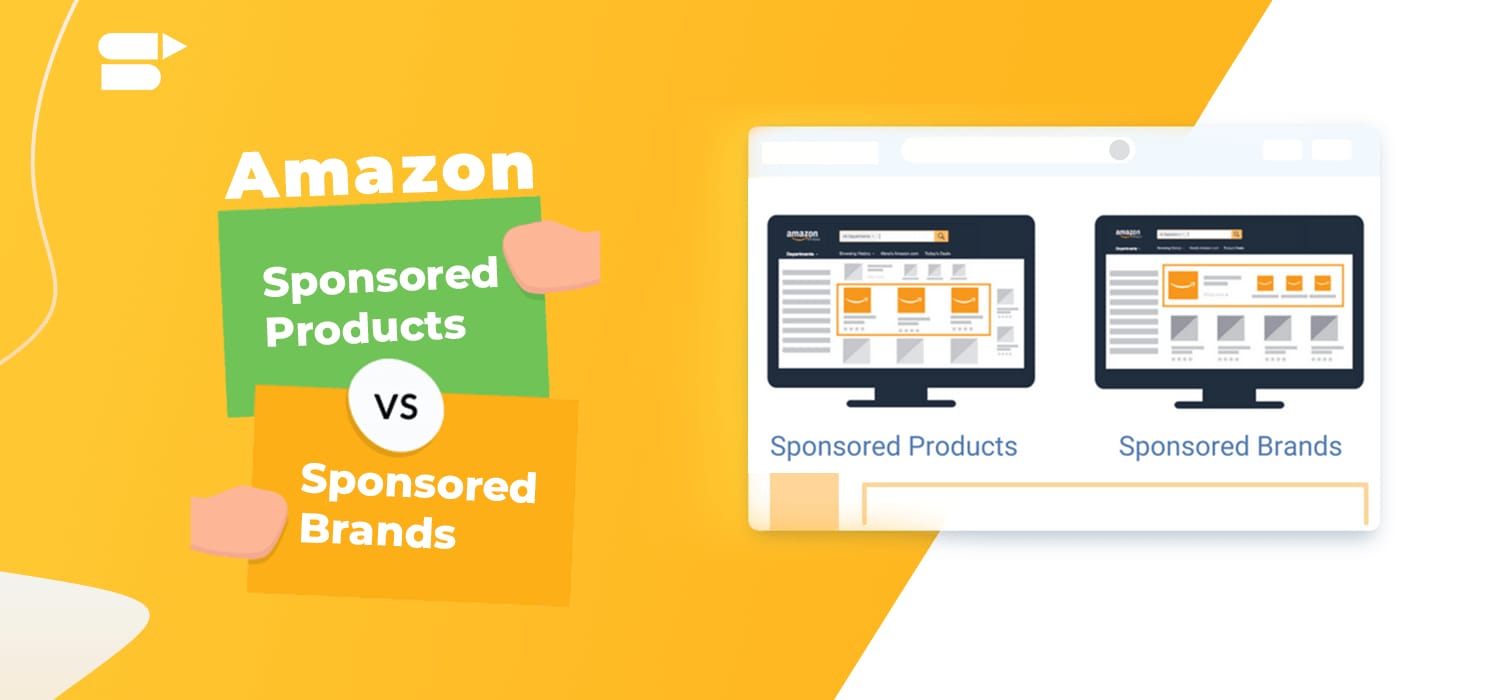

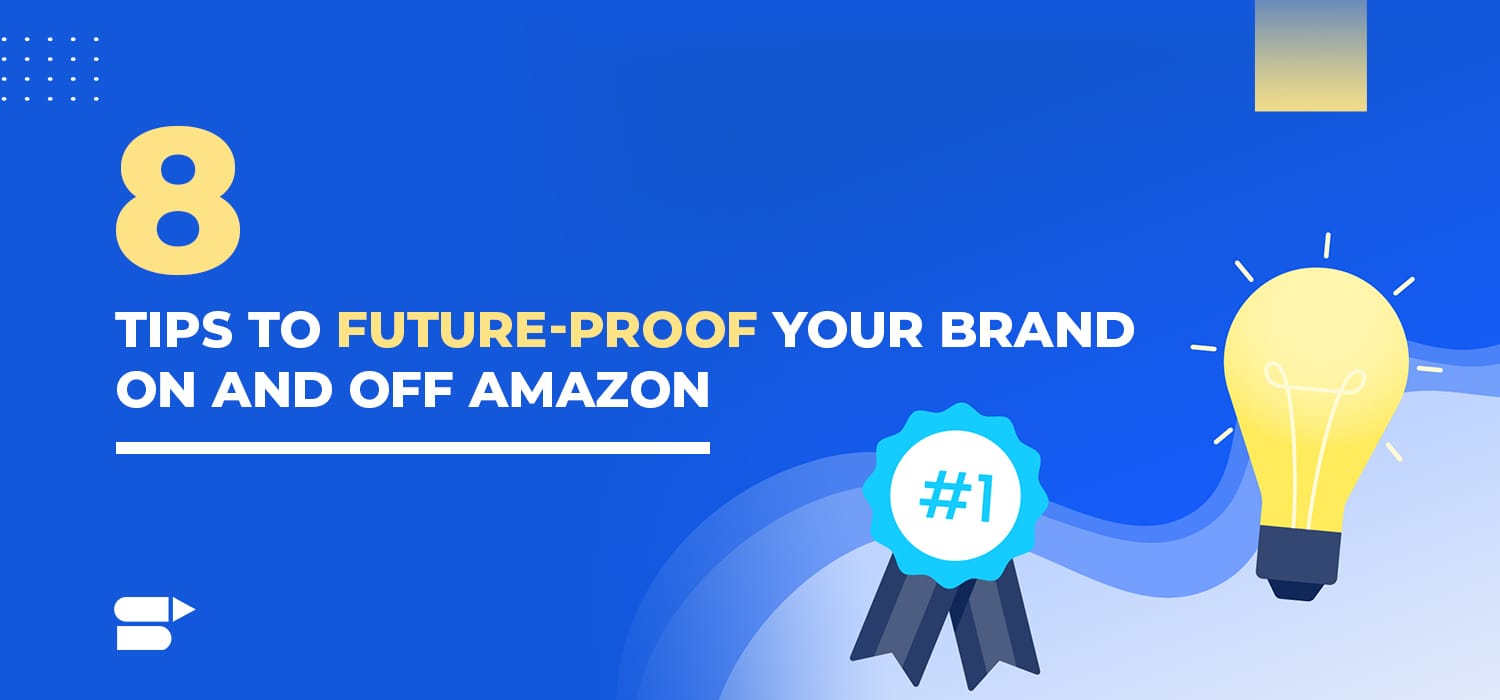

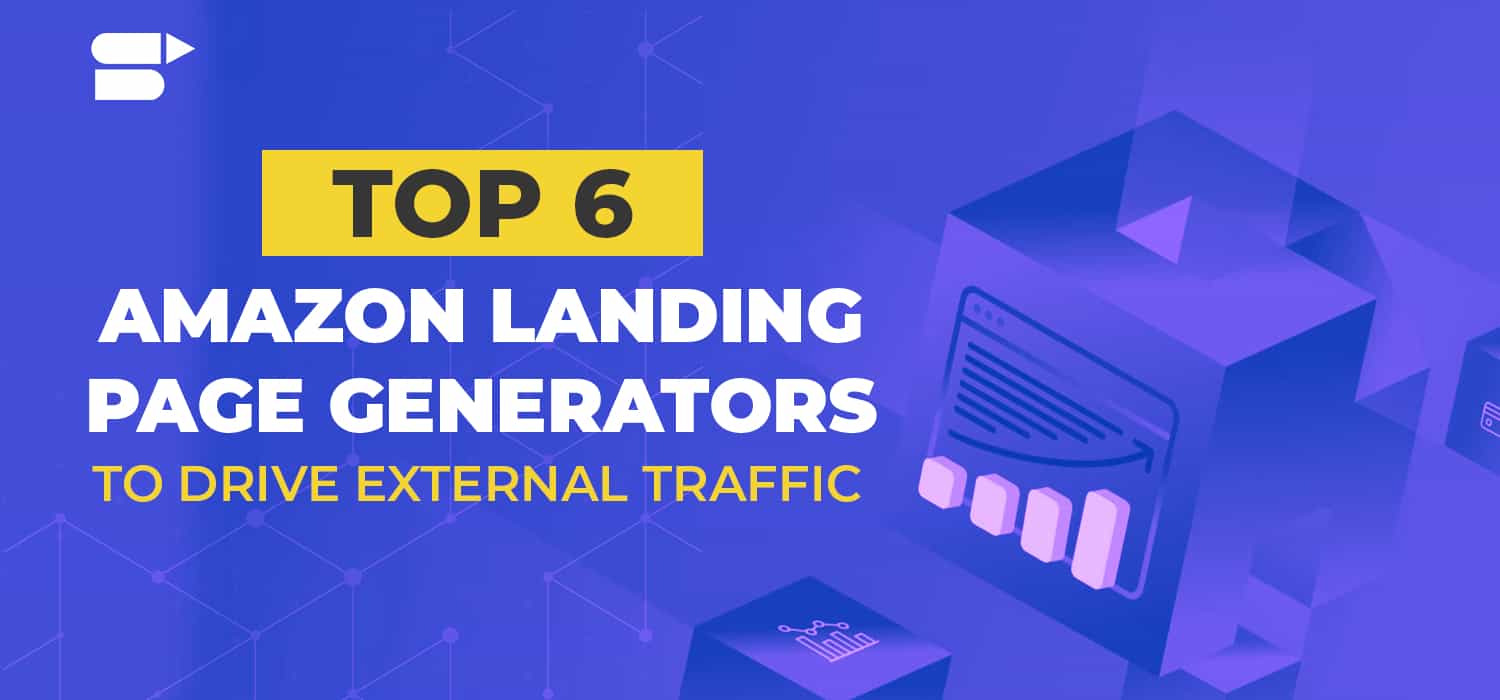
Harrison
June 24, 2024Thanks for this post! It was very helpful and informative.
Clare Thomas
July 3, 2024Very happy to hear that.
Chris
June 25, 2024Very insightful! This post answered a lot of my questions.
Clare Thomas
July 3, 2024Thank you for your valuable feedback.
Tim David
June 26, 2024Can I sell digital products on these marketplaces?
Clare Thomas
July 3, 2024Yes, you can sell digital products on marketplaces like Etsy and Amazon. Etsy is particularly well-suited for digital downloads like printables and design templates, while Amazon allows for the sale of eBooks and other digital content through Kindle Direct Publishing.
Logan Brooks
August 22, 2024Appreciate the details.
Clare Thomas
September 23, 2024Thanks!
Matthew Alexander
August 27, 2024Really valuable.
Clare Thomas
September 23, 2024Glad you like it.
Maxwell Joseph
September 6, 2024Helpful article.
Clare Thomas
September 23, 2024thank you.
Carter Anthony
September 15, 2024Excellent advice.
Clare Thomas
September 23, 2024Thanks for your feedback.